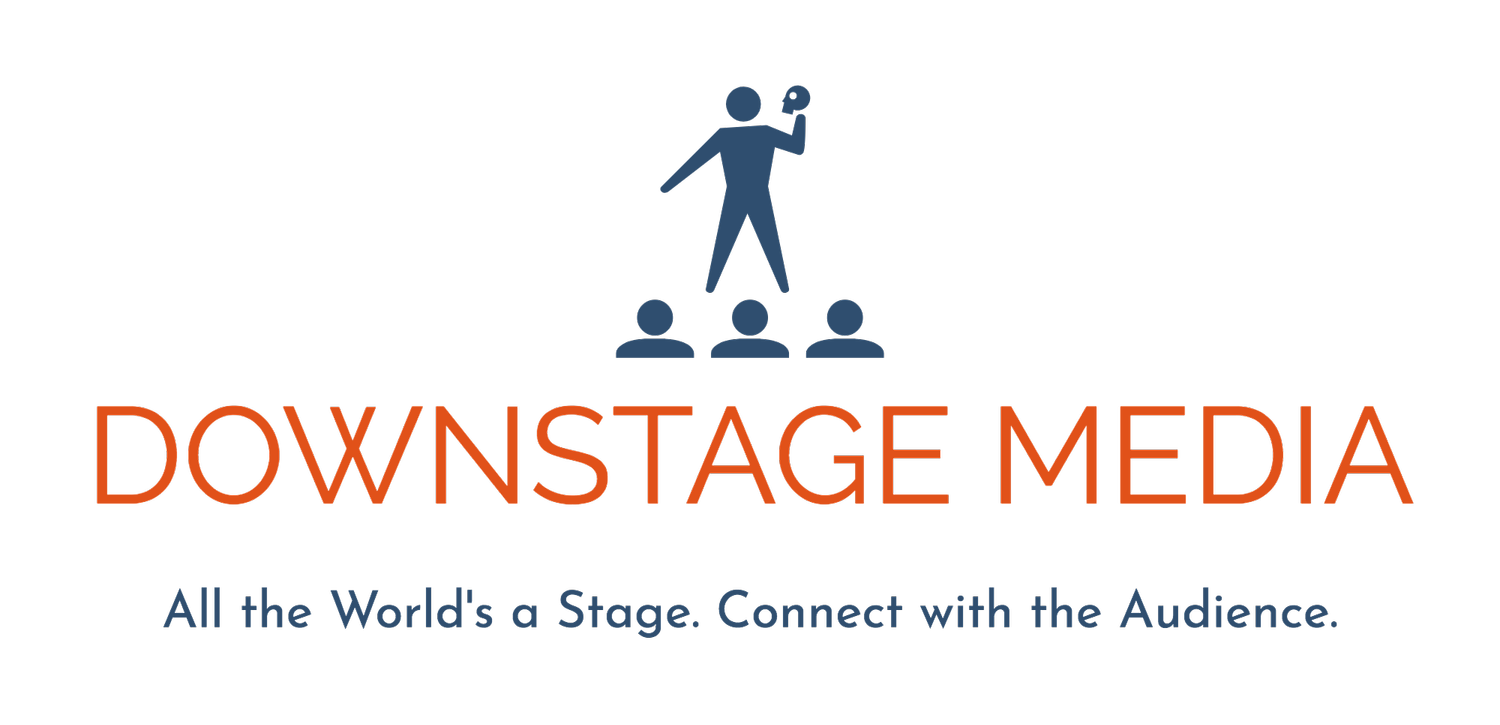How Can a Clear BrandScript Boost Your Mailchimp Campaigns?
With so many different marketing channels - social media marketing, email marketing, blogging - it’s important to be consistent with the words you use in your brand. The problem is that sometimes when you’re writing social media posts, you’re not thinking about what you wrote in your last email. In this blog post, you’ll learn how a BrandScript helps you with a key marketing channel - your Mailchimp email marketing campaigns. As a Certified StoryBrand Guide and a Mailchimp partner, I am in this world day in and day out.
What is a BrandScript?
Challenges of Email Marketing
How does a BrandScript enhance Mailchimp campaigns?
Practical Steps to Implement a BrandScript in Mailchimp
How to get a BrandScript
Real Life Examples
What is a BrandScript?
When customers are invited into a story, they pay more attention to your brand, make purchases, and have the talking points they need to tell others about those products and services.
Best selling author Donald Miller created the StoryBrand framework to give you the prompts for the talking points that every campaign needs. He popularized them in his book Building a StoryBrand.
BrandScripts are created from the talking points in the StoryBrand framework.
Just like how actors use a script to know what to say on stage, you can use a BrandScript to know what to say in your marketing.
An example of a BrandScript from mystorybrand.com.
Challenges of Email Marketing
Inconsistent Messaging
Often when it’s time to sit down and send out an email marketing campaign, you start from scratch. You think about what you’re trying to promote, and you wing it. Then, maybe a little while later, you do it again.
The problem is, from campaign to campaign, your messaging is inconsistent. In order to get people to register for your next event, you may say in one email “book now” and in the next email “register now” and in the next email “get your tickets.”
The best marketing, though, is an exercise in memorization. By consistently choosing one of these calls to action, and then using it in the three different emails that you’re sending out, your audience will know what to do. They know that they have to “book now.” Because you have told them repeatedly. You’ve seared it into their brains. Branded, if you will.
Low Engagement Rates
At StoryBrand, the mantra is, “if you confuse, you lose.” We’ve seen that in low click through rates on Mailchimp campaigns for sure. This plays out in two ways.
Not giving the audience a clear call to action.
If you don’t tell your audience what you want them to do, they won’t do it. It’s hard to get people to click if you don’t give them anywhere to click at all. Or worse, if it’s buried in a too-long email and hard to find.
Giving the audience too many places to click.
Sometimes with too many options, people don’t take any action at all. An email campaign that’s full of links and buttons will often leave people not actually clicking on what you want them to click. Or worse, not doing anything at all.
Brand Confusion
Mixed messages in your email campaigns can weaken your overall brand identity. Ideally, you want your audience to open an email from your brand and know that it’s from your brand without even seeing who it’s from. That’s what consistent messaging can do for you.
How does a BrandScript enhance Mailchimp campaigns?
Consistency in messaging
With a BrandScript, you pull from the same set of talking points so that your email campaigns can have a consistent message. From one email to the next, you may use different parts of the BrandScript - highlighting one section over another - but you are always pulling from the same source.
We all probably have some commercial jingles rolling around in our heads, right? That’s because the advertisers knew that they should run the same commercial over and over again to help you remember their product. Sure, the “Gimme a Break” Kit Kat song has changed, but they are still pulling from the same message.
Clarity = Engagement
When you make it clear what you are offering, how it’s going to make your audience’s lives better, and how they can get it, they are more likely to take action. Simple words without a lot of jargon. Clear calls to action. Putting your audience first. These are all integral parts of a BrandScript. When you use them in your Mailchimp email campaigns you get higher open rates, and more clicks.
Strong Brand Identity
By using a BrandScript, you get more consistent with the words that you use. Does it mean that every email campaign is going to say the same thing? No. But it does mean that certain talking points of the BrandScript will be repeated from time to time. That repetition helps your audience know who you are. When they know who you are they trust you and open your emails to find out what’s inside. They know what to expect from you because you’ve made it clear thanks to your BrandScript.
Practical Steps to Implement a BrandScript in Mailchimp
Creating a BrandScript
First, start with a BrandScript for your company as a whole. This will give you the talking points that you’ll be using over and over again in your emails.
To create a BrandScript, you need to understand the StoryBrand framework.
The StoryBrand framework forces you to think of your customer as a character with a problem who meets a guide who understands their fear and gives them a plan that calls them to action that results in successful results.
Once you have your BrandScript for your company as a whole, you are ready to move on to your Mailchimp campaigns.
Integrating with Mailchimp
Once you have your BrandScript, you will be very clear on what words to use in your email campaigns. You know that you are going to start by talking about their problems - and you’ve identified what they are. You know that you are going to talk about what success looks like on the other side when your audience has experienced your problem.
Here are a few ways that you can use elements of your BrandScript in a Mailchimp campaign.
The header of your campaign can include what you offer how it makes their lives better, and how they can get it. Every email you send can have this banner.
Your signature can include the problem you solve, the solution you offer, and the successful results that your customer will experience.
Your call to action buttons will have the same words every time
You are going to show social proof to give your audience confidence in your abilities or in your product
Each email may talk about a different problem and solution that you offer, but overall, you are going to have key elements that are consistent throughout your Mailchimp campaigns.
Personalization and Segmentation
Each product that you offer can have it’s own BrandScript. When someone is interested in that product, you can tag them in Mailchimp or place them in a segment. Then when you send them email campaigns, you can make sure that you are talking about the problems they will resonate with and the solutions that will fix those problems. You can send out your campaigns to those subscribers and get better outcomes because you know that you are speaking directly to what they are going through.
How to Get a BrandScript
DIY Approach
You can get a BrandScript by learning the StoryBrand framework. Here are a few ways to do that:
The StoryBrand Messaging Framework course in Business Made Simple.
taking the StoryBrand Messaging Framework course in Business Made Simple
the book Building a StoryBrand walks you through the process
This is how I learned the framework. By reading the book, and taking the course.
Later on, when I realized how effective it was in email marketing, I decided to become certified in StoryBrand and was trained by Donald Miller on how to write effective BrandScripts.
Professional Help
Annie Schiffmann is a Mailchimp Partner and a StoryBrand Certified Guide.
Sometimes, though, it’s hard to work on your own marketing. You need someone who’s not as close to your company to give a fresh, outsider’s perspective. You may be stuck in some ways of thinking that a second set of eyes can break you out of.
Not only that, you want to make sure that you’re doing it right. If you’re going to take the time make a BrandScript and learn the StoryBrand framework, it’s imperative that you get the most out fo it. This is why it’s best to work with a Certified StoryBrand Guide, like me. Us Certified StoryBrand Guides are trained by Donald Miller, J. J. Peterson and the StoryBrand team to make sure that we know the ins and outs of this framework. We have to renew every year, and maintain our training throughout the year.
As a Certified StoryBrand Guide, I can help you write your BrandScript, or do it for you.
Downstage Media’s Services
At Downstage Media, we offer a BrandScript Starter Package to get you a BrandScript quickly.
The BrandScript Starter Package includes:
BrandScript Planning Session - a 90-minute consultation with me or a member of Downstage Media to develop a draft of your BrandScript using the StoryBrand Messaging Framework
Final BrandScript - the talking points you’ll use in your marketing assets
BrandScript Narrative - paragraph form of BrandScript
Implementation Plan - a map on how to use your BrandScript in your marketing
One-Liner - a short blurb that explain what you do in a way that draws people in. In Mailchimp campaigns, this is often used in email signature lines.
The BrandScript Starter package helps you understand how to use the StoryBrand 7-part framework to create a BrandScript and clarify your message.
Schedule a call to discuss your options for getting a BrandScript and improving your Mailchimp campaigns.
Real-Life Examples
Case Studies
A local New Jersey nonprofit, Summit Performing Arts Resource Committee was struggling in 2021. They usually relied on their pancake breakfast to bring in donations. But with COVID raging, there was no way that could happen. They took the time to hunker down and focus on email marketing instead. I worked with them on their BrandScript. We took the talking points of the BrandScript and turned them into a paragraph BrandScript Narrative that we sent out to their entire email list. Within hours they had more in donations than they would have with the pancake breakfast. One email got them $4000. They. Were. Thrilled.
Trigger Point Sports Therapy Center uses a BrandScript Narrative in their automated welcome email to subscribers. They see a 40% open rate, which is more than double the industry average of 18.1%. And a click rate of 2.7%, above the industry average of 1.5%.
Bottom Line
Boosting your email marketing with a BrandScript can make a world of difference. Consistent messaging builds a strong brand identity and keeps your customers engaged, leading to higher open rates, more clicks, and better conversions.
We all know the struggle of inconsistent messaging and brand confusion in email marketing. A BrandScript gives you a cohesive narrative that grabs attention and builds trust. Clarity captures attention and turns casual readers into loyal customers.
At Downstage Media, our BrandScript Starter Package makes it easy. You get planning sessions, delivery of assets, and an implementation plan to optimize your marketing.
Take the Summit Performing Arts Resource Committee, for example. They transformed their email marketing and saw amazing results with just one BrandScript-focused email.
Clear messaging and strategic storytelling can make the most of your marketing dollars and elevate your email marketing. Ready to see the difference?















